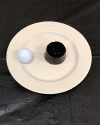The effects of the form of sugar (solid vs. beverage) on body weight and fMRI activation: A randomized controlled pilot study
- PMID: 33999960
- PMCID: PMC8128228
- DOI: 10.1371/journal.pone.0251700
The effects of the form of sugar (solid vs. beverage) on body weight and fMRI activation: A randomized controlled pilot study
Abstract
Objective: To test if sugar sweetened beverages (SSBs) and sugar sweetened solids (SSSs) have differential effects on body weight and reward processing in the brain.
Methods: In a single blind randomized controlled pilot trial (RCT), twenty participants with BMI between 20 and 40 kg/m2 were randomized to consume a 20 fluid ounce soda (SSB, 248 kcal) or the equivalent in solid form (SSS; similar to thick gelatin or gummy candy) daily. At baseline and day 28, fasting body weight and fed-state BOLD fMRI of the brain were assessed. Differences in fMRI signals between views of low-fat (LF (<30%)) high sugar (HS (>30%)) food, and non-food images were calculated in brain regions implicated in energy homeostasis, taste, and reward.
Results: All participants in the SSB (6F 4M; 8 Caucasian; 36±14 y, 28.2±5.5 kg/m2; Mean±SD) and SSS (3F 7M; 6 Caucasian; 39±12; 26.3±4.4) groups completed the study. Weight change was 0.27±0.78 kg between SSB and SSS participants. Changes in the fMRI response to LF/HS foods in reward, homeostatic and taste regions tended to not be different between the groups over the four weeks. However, activation of the right substantia nigra increased following the SSB but decreased activation following the SSS in response to LF/HS foods over 28 days (-0.32±0.12). Ratings of wanting for LF/HS foods were correlated with activation in several brain regions, including the OFC.
Conclusions: Change in weight was modest between the groups in this study. Daily consumption of a SSB over 28 days led to mixed responses to LF/HS foods in areas of the brain associated with reward. Ratings of wanting are correlated with fMRI activation inside an MRI scanner.
Conflict of interest statement
The authors have declared that no competing interests exist.
Figures
Similar articles
-
Frontostriatal and behavioral adaptations to daily sugar-sweetened beverage intake: a randomized controlled trial.Am J Clin Nutr. 2017 Mar;105(3):555-563. doi: 10.3945/ajcn.116.140145. Epub 2017 Feb 8. Am J Clin Nutr. 2017. PMID: 28179221 Free PMC article. Clinical Trial.
-
Effects of decreasing sugar-sweetened beverage consumption on body weight in adolescents: a randomized, controlled pilot study.Pediatrics. 2006 Mar;117(3):673-80. doi: 10.1542/peds.2005-0983. Pediatrics. 2006. PMID: 16510646 Clinical Trial.
-
An Exploration of the Role of Sugar-Sweetened Beverage in Promoting Obesity and Health Disparities.Curr Obes Rep. 2021 Mar;10(1):39-52. doi: 10.1007/s13679-020-00421-x. Epub 2021 Jan 7. Curr Obes Rep. 2021. PMID: 33411311 Free PMC article. Review.
-
Association of a Workplace Sales Ban on Sugar-Sweetened Beverages With Employee Consumption of Sugar-Sweetened Beverages and Health.JAMA Intern Med. 2020 Jan 1;180(1):9-16. doi: 10.1001/jamainternmed.2019.4434. JAMA Intern Med. 2020. PMID: 31657840 Free PMC article.
-
Hunger and BMI modulate neural responses to sweet stimuli: fMRI meta-analysis.Int J Obes (Lond). 2020 Aug;44(8):1636-1652. doi: 10.1038/s41366-020-0608-5. Epub 2020 Jun 18. Int J Obes (Lond). 2020. PMID: 32555497 Free PMC article. Review.
Cited by
-
Multimodal Neuroimaging of Obesity: From Structural-Functional Mechanisms to Precision Interventions.Brain Sci. 2025 Apr 25;15(5):446. doi: 10.3390/brainsci15050446. Brain Sci. 2025. PMID: 40426616 Free PMC article. Review.
-
A randomized trial to evaluate the impact of Singapore's forthcoming Nutri-grade front-of-pack beverage label on food and beverage purchases.Int J Behav Nutr Phys Act. 2023 Feb 15;20(1):18. doi: 10.1186/s12966-023-01422-4. Int J Behav Nutr Phys Act. 2023. PMID: 36793058 Free PMC article. Clinical Trial.
-
Parent-Child Mutual Influences on Sugar-Sweetened Beverage Consumption Behaviors: Actor-Partner Analysis.JMIR Pediatr Parent. 2025 Jul 24;8:e76943. doi: 10.2196/76943. JMIR Pediatr Parent. 2025. PMID: 40705441 Free PMC article.
References
Publication types
MeSH terms
Substances
Grants and funding
LinkOut - more resources
Full Text Sources
Other Literature Sources
Medical



